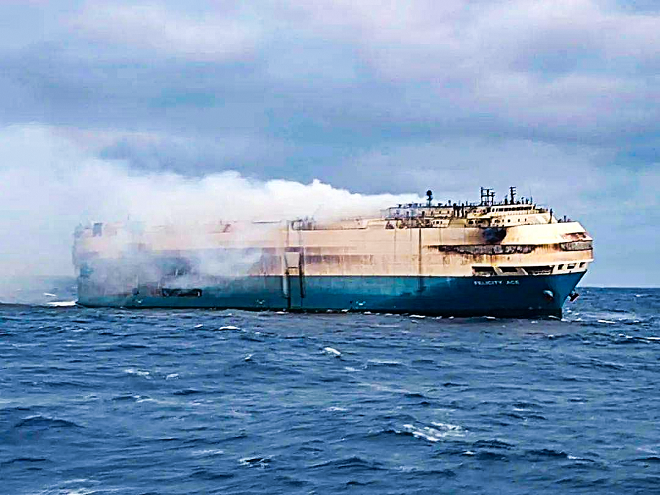国际海上保险联盟发布船舶安全运输电动汽车的建议
IUMI publishes "Best practice & recommendations for the safe carriage of electric vehicles"
发布者:KnowMi 发布时间: 2023-09-05 09:09:54 点击量: 2204 来源:Gcaptain

国际海上保险联盟(IUMI)的新研究表明,80%的汽车起火是车体和内饰部件引起的,而非推进系统。然而,与传统内燃机汽车不同的是,当电动汽车的电池发生不稳定的化学反应时,存在着热失控的可能性。热失控使火灾难以扑灭,因此必须迅速采取边界冷却等缓解措施。鉴于此,IUMI提出了关于电动汽车(EV)安全运输的部分建议:
①早期火灾探测和验证/确认十分重要,可缩短探测与应急响应之间的时间。除传统系统外,还可选择热像仪和人工智能系统。
②二氧化碳灭火系统若使用迅速,可成功扑灭汽车运输船(PCTC)火灾,其容量应增加一倍。高倍数泡沫灭火系统也能有效防止热量在汽车间的转移。
③经风险评估和控制措施后,应允许电动汽车在滚装船上充电,其内置的安全机制通常在充电时启动。
Research proves that vehicle fires are largely (approx. 80%) fuelled by the car body and interior parts rather than the propulsion system. However, the potential for thermal runaway (when the battery suffers an unstable chemical reaction) exists for EVs whereas it is not a consideration for ICEVs. Thermal runaway makes fires hard to extinguish, hence mitigation measures such as boundary cooling must be employed rapidly. In light of this, IUMI has published recommendations on the safe carriage of electric vehicles (EVs):
• Early fire detection and verification/confirmation is critically important to reduce the time between detection and firefighting response to a minimum. In addition to the conventional systems, could include thermal imaging cameras and AI powered systems.
• CO2 extinguishing systems, if applied quickly, are successful in fighting PCTC fires and their capacity should be doubled. High-expansion foam fire extinguishing systems have also proved to be effective to prevent heat transfer from one vehicle to another.
• Charging onboard ropax vessels should be permitted subject to relevant risk assessments and control measures. Safety mechanisms built into EVs are usually activated during charging.